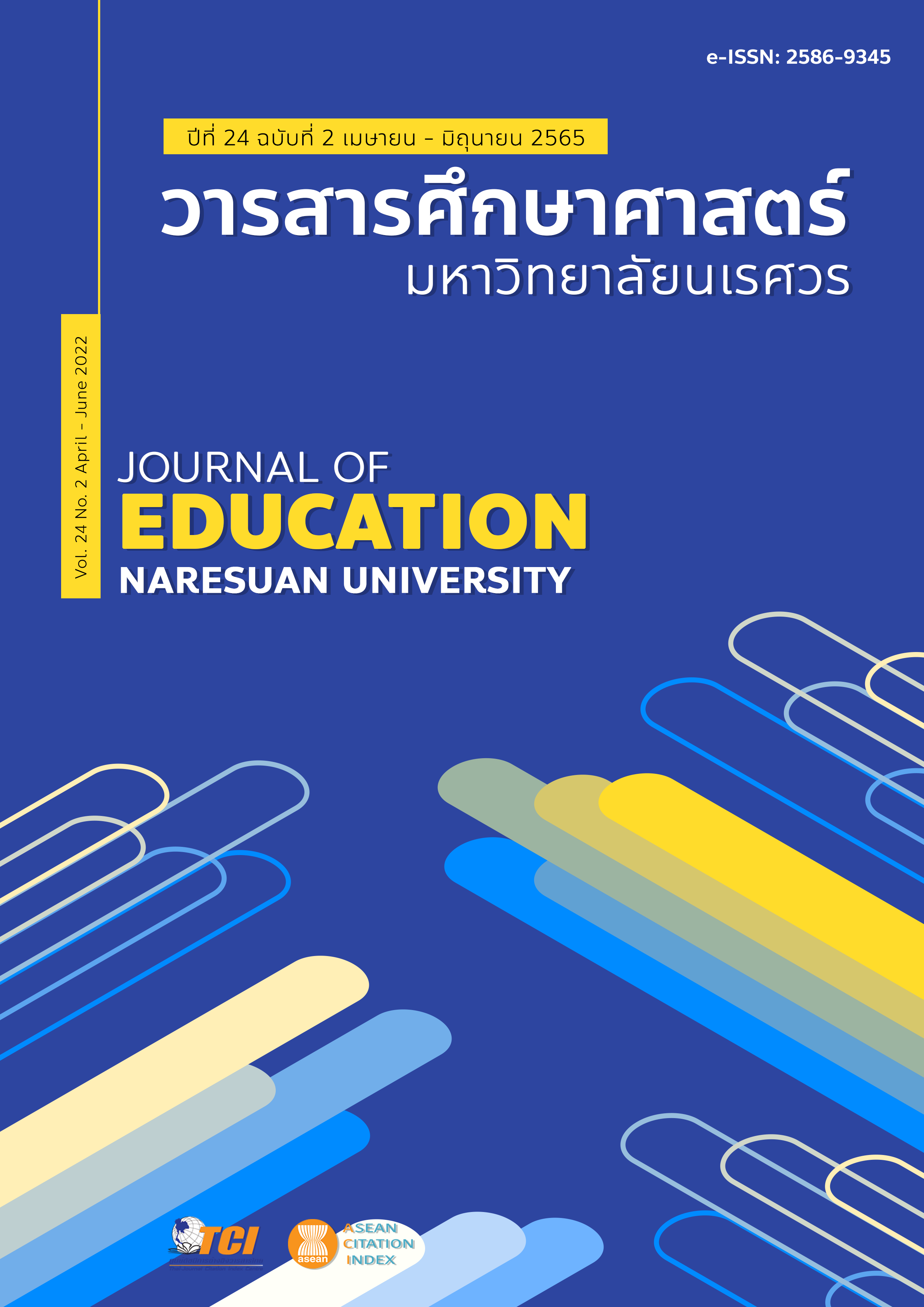FACTORS AFFECT THE EFFICIENCY OF THAI LANGUAGE TEACHING AND LEARNING AS A FOREIGN LANGUAGE UNDERGRADUATE LEVEL OF THE MANDALAY UNIVERSITY OF FOREIGN LANGUAGE [MUFL] REPUBLIC OF THE UNION OF MYANMAR ปัจจัยที่มีผลต่อประสิทธิภาพของการจัดการเรียนการสอนภาษาไทยในฐานะภาษาต่างประเทศระดับปริญญาตรี ของมหาวิทยาลัยภาษาต่างประเทศ กรุงมัณฑเลย์ (MUFL) สาธารณรัฐแห่งสหภาพเมียนมาร์
Main Article Content
Abstract
The purpose of this research is to study factors affecting the efficiency of Thai language teaching and learning as a foreign language at the undergraduate level of the Foreign Language University, Mandalay (MUFL), Republic of the Union of Myanmar. This research uses mixed research methods between quantitative research and qualitative research. The samples are used in the research which were 50 Burmese undergraduate students in the 3rd and 4th years of the year, a total of 100 people, who are students studying Thai major at the Foreign Language University, Mandalay (MUFL) Republic of the Union of Myanmar by the specific selection methods of 9 Burmese and Thai lecturers who taught Thai language as the Foreign Language at University of Mandalay (MUFL), the Republic of the Union of Myanmar by a specific selection method. The research instruments were a questionnaire about factors affecting the efficiency of Thai language teaching and learning as a foreign language at the undergraduate level of the Foreign Language University, Mandalay (MUFL), Republic of the Union of Myanmar. The questionnaires are divided into 2 sets that set 1, student questionnaire and set 2, teacher questionnaire. The factors affecting‘s interview is about the efficiency of Thai language teaching and learning as a foreign language at the undergraduate level of the Foreign Language University, Mandalay (MUFL), Republic of the Union of Myanmar. The interview is divided into 2 sets. The set number 1 is the interview form for students and set number 2 is interview form for teachers. The quantitative data analysis using descriptive statistics which are percentage, mean, standard deviation. The qualitative data analysis using the descriptive method. The results of the research showed that the overall result is an average of 3.60 The standard deviation 0.75 is at a high level, with the 1st aspect, context or external environment averaging 4.13. The standard deviation 0.64 is at the high level. The aspect 3 in the aspect of process are that the mean is 3.57 and the standard deviation 0.83 is at the high level. Summarize the opinions of the 3rd and 4th year students regarding the factors affecting the efficiency of organized the teaching and learning of Thai language as a foreign language at the undergraduate level of the Foreign Language University of Mandalay (MUFL), Republic of the Union of Myanmar, found that the overall result is averaging 3.77, standard deviation 0.88 is at a high level. With all aspects being at a high level.
Article Details

This work is licensed under a Creative Commons Attribution-NonCommercial-NoDerivatives 4.0 International License.
The owner of the article does not copy or violate any of its copyright. If any copyright infringement occurs or prosecution, in any case, the Editorial Board is not involved in all the rights to the owner of the article to be performed.
References
Astin, A. W. (1993). What matters in college? four critical years revisited. San Francisco: Jossey-Bass.
Chotivachira, B. (2016). A model of cross-culture education management of bachelor’s degree in Thai as a foreign language of Thai universities and republic of Korea Universities (Doctoral dissertation). Bangkok: Chulalongkorn University. [in Thai]
Krashen, S. D., & Terrell, T. D. (1983). The natural approach language acquisition in the classroom. Hayward, CA: The Alemany Press.
Niemtes, W. (2009). Analysis of factors affecting the educational quality of the teaching and learning project according to the curriculum of the ministry of education in English in secondary schools affiliated with the Office Basic Education Board Ministry of Education (Doctoral dissertation). Bangkok: Chulalongkorn University. [in Thai]
Prangsorn, R. (2017). The science of teaching Thai as a foreign language. Bangkok: Chulalongkorn University Press. [in Thai]
Prasitratasin, A. (1999). Languages in Thai society: Diversity, changing and development. Bangkok: Chulalongkorn University Press. [in Thai]
Suwannachot, P. (2012). Myanmar hits learning "Thai language", getting a job market in the future. (Khaosod Online). Retrieved April 10, 2020, from https://www.khaosod.co.th/breaking-news. [in Thai]
Vajiralongkorn, P., et al. (2017). Mechanism of cross-cultural learning in Myanmar – Thai: Thai studies, Burmese studies and religious studies. Retrieved April 10, 2020, from http://rasc.mcu.ac.th/wp-content/uploads/2019/01/Article [in Thai]
Win Win Saw. (2012). Myanmar hits learning "Thai language", getting a job market in the future. (Khaosod Online). Retrieved April 10, 2020, from https://www.khaosod.co.th/breaking-news [in Thai]
Witthayasakphan, S. (2006). Teaching Thai as a foreign language. Chiang Mai: Ming Mueang Press. [in Thai]


